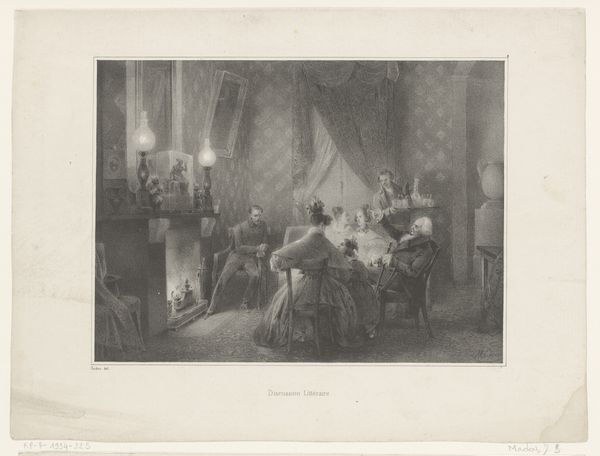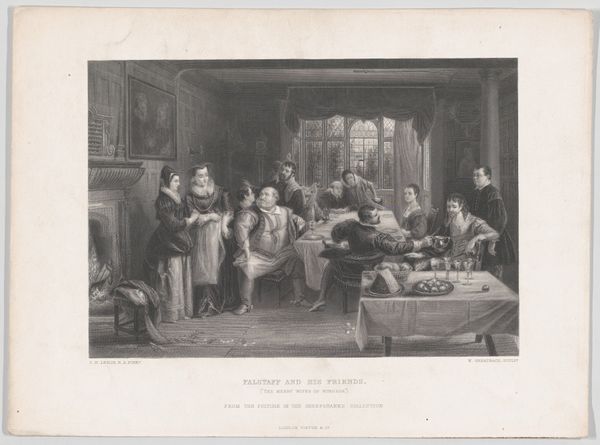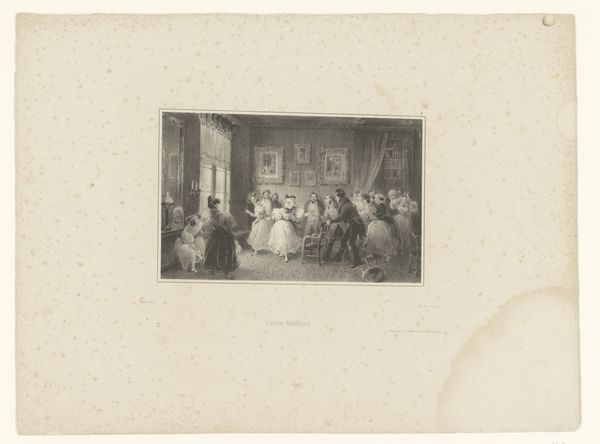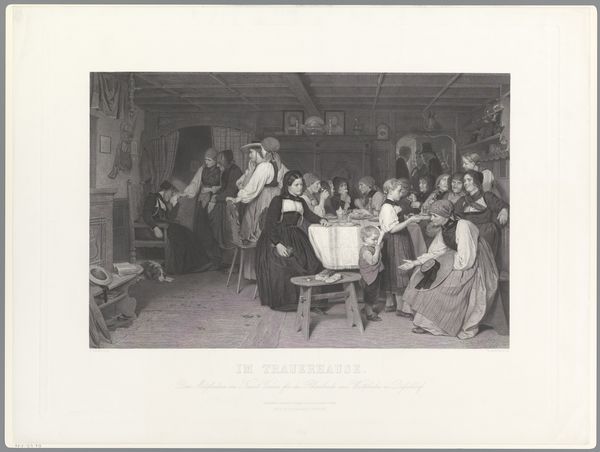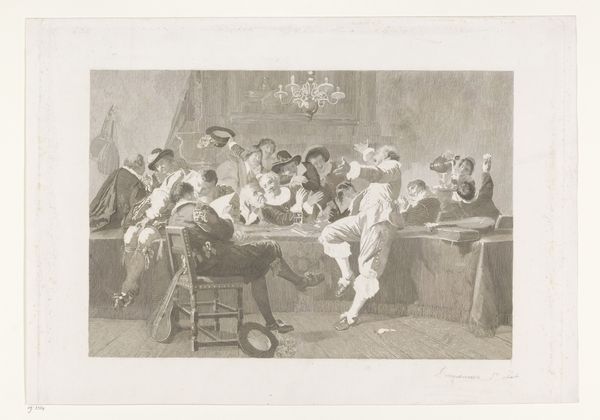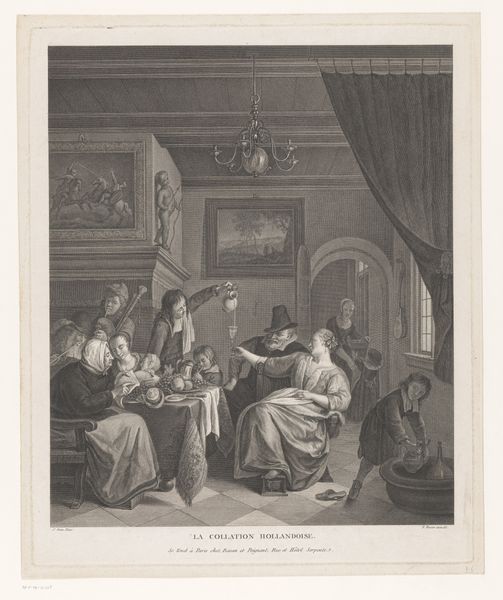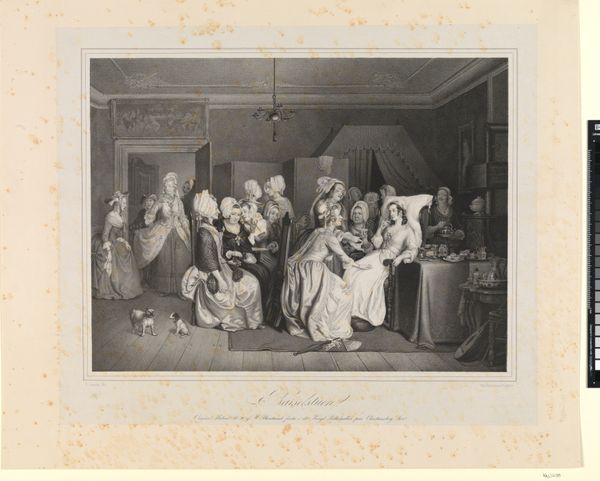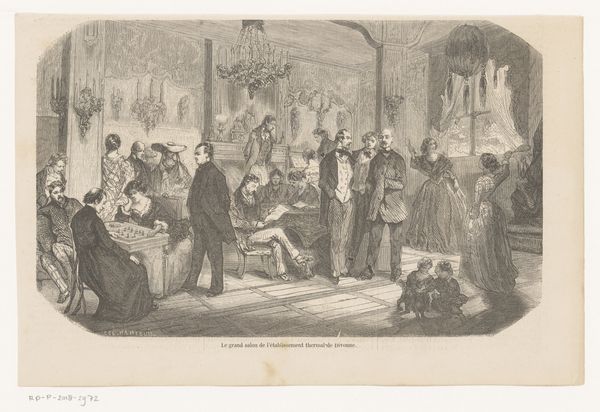
Interieur met een groep mensen die een portret maakt van een man 1806 - 1877
0:00
0:00
jeanbaptistemadou
Rijksmuseum
print, engraving
#
portrait
# print
#
romanticism
#
genre-painting
#
history-painting
#
academic-art
#
engraving
#
realism
Dimensions: height 270 mm, width 363 mm
Copyright: Rijks Museum: Open Domain
Editor: This is "Interior with a Group of People Making a Portrait of a Man," a print made by Jean-Baptiste Madou sometime between 1806 and 1877. It strikes me as a staged scene; everyone seems quite stiff. What's your read on it? Curator: It’s fascinating how Madou captures the burgeoning bourgeois obsession with portraiture. Think about it – previously, having your portrait made was exclusively for the aristocracy. This engraving reflects a societal shift where the middle class aspired to, and could afford, this type of representation. Editor: So, the print is documenting, and perhaps democratizing, access to portraiture? Curator: Precisely. And consider the setting; the comfortable domestic interior signifies stability and social standing, things that the rising middle class would find valuable to portray. Look at the details - the fashionable clothes, the carefully arranged furniture, and the sheer number of people involved in the portrait-making process. Editor: Right, there are a lot of people there! Are they all directly involved in making the portrait? Curator: Possibly not all involved, but their presence suggests a performance of social status, where being seen and admired was as important as the artwork itself. The ‘realism’ of the scene also aligns with the public’s desire for accurate and relatable portrayals of everyday life. Is it a document of history or more of a theater piece? Editor: So, in a way, this image isn't just about art, but also about the changing social landscape? Curator: Exactly. It’s a visual record of a culture in transition, where art became intertwined with identity and social mobility. Editor: That really puts it into a different perspective for me. Thanks for the insights! Curator: My pleasure! It's these dialogues that allow us to really interrogate what is being visually represented.
Comments
No comments
Be the first to comment and join the conversation on the ultimate creative platform.

